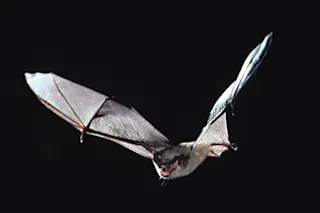Just like dissection can reveal important information about animal structure and morphology, so can attempting to recreate and mimic aspects of animals with robotics.
That's the approach of a group of researchers at Brown University, who have developed a robotic wing to mimic a bat wing in flight. They are using this wing to measure the aerodynamics of a bat's flight, results which may someday help us build better flying machines.
(Credit: Perrin Ireland)
Perrin Ireland
Bats have very different wings than flying insects and birds, and their wings are correspondingly more structurally complex. Bat wings make their owners capable of commuting and migrating long distances, carrying heavy loads, flying fast, and being able to fly in narrow spaces like between trees.
Their wings have up to 25 actively controlled joints and 34 degrees of freedom. By comparison, the human arm is said to have 7 degrees of freedom. Bats ...














